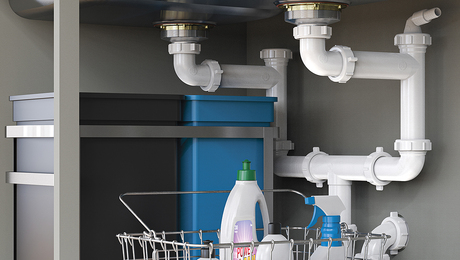What’s New in Microwave Ovens
Technological breakthroughs let you fine-tune the heat so that you can soften ice cream or brown a chicken.

Synopsis: A buyer’s guide to microwaves, this article walks readers through the basic choices. Also included are a timeline on the development of microwave ovens and a sidebar on the risks of microwaves.
In 1946, Percy Spencer, a brilliant engineer with Raytheon, was testing a new vacuum tube called a magnetron when he noticed that a candy bar in his pocket had melted. Curious, Spencer then put a few kernels of popcorn near the tube, and they popped almost immediately. Microwave cooking had been discovered.
A year later, the first microwave oven was made for testing. Not exactly a kitchen-friendly appliance, this first microwave was 5 1⁄2 ft. tall and weighed more than 750 lb. The tube got so hot that it needed a water-cooled radiator to keep it under control.
Lighter-weight air-cooled models soon followed, and microwave ovens continued to evolve until 1967, when the first microwave oven for the home was introduced. As they say, the rest is history. By 1975, sales of microwave ovens exceeded sales of gas ranges. Today, it’s tough to find a kitchen without one of these handy appliances.
How microwaves cook
Microwaves in an oven tend to be distributed in specific and not necessarily even patterns, which is why microwaved food can be overcooked on the outside and cold in the middle. The first upgrade to the basic microwave box is a carousel that rotates food for a more even exposure to microwaves.
Almost every microwave maker offers a carousel model. The drawback is the square-peg-in-around-hole issue: Carousels are round, and most cookware is rectangular. Cookware has to fit in the confines of the carousel’s diameter. Two companies, LG (Lucky Goldstar) and Samsung, have introduced microwave ovens with round cavities that allow for larger carousels, increasing usable capacity. Samsung’s version sports a round door. LG’s solution to the carousel dilemma is Glide and Cook: A tray in the bottom of the oven moves side to side instead of rotating.
The alternative to moving the food in the oven is to move the microwaves themselves. Many companies, including Whirlpool and GE, offer models with stirrers that act like fans to distribute microwaves through the oven cavity. LG claims that its Intellowave system essentially converts the microwave pattern from 2-D to 3-D.
Location, location, location
To save valuable counter space, many companies offer over-the-counter (OTC) models, including Sharp, Samsung, and GE. This type of microwave oven usually comes in 27-in. and 30-in. widths and is designed to be built in with cabinets to the top and sides.
The most popular place to install a microwave is over the range (OTR). Like OTC models, OTR ovens are built into the cabinetry, only above a range or cooktop. OTR microwave ovens double as range hoods to exhaust cooking odors and vapors from the stove. Like many range hoods, though, OTR microwave ovens aren’t as deep as the typical range, so cooking odors and vapors from the front burners can escape into the kitchen. Samsung’s SMH7155 unit has a vent that extends at the push of a button to cover the front burners.
For more photos and details, click the View PDF button below:
Fine Homebuilding Recommended Products
Fine Homebuilding receives a commission for items purchased through links on this site, including Amazon Associates and other affiliate advertising programs.

Musings of an Energy Nerd: Toward an Energy-Efficient Home

Graphic Guide to Frame Construction

All New Bathroom Ideas that Work


























